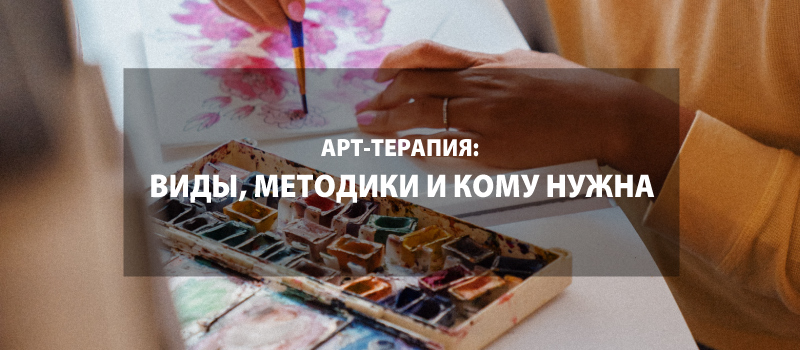
Thanks to creativity, new art objects are constantly appearing in the world. They delight the eye and soul, excite our consciousness and allow us to see how limitless human imagination is. But beyond all that, creativity is also one of the great ways to reduce stress, relieve obsessive anxiety, and lift your mood. And most importantly, it is available to everyone and is known to us as art therapy.
What is art therapy?
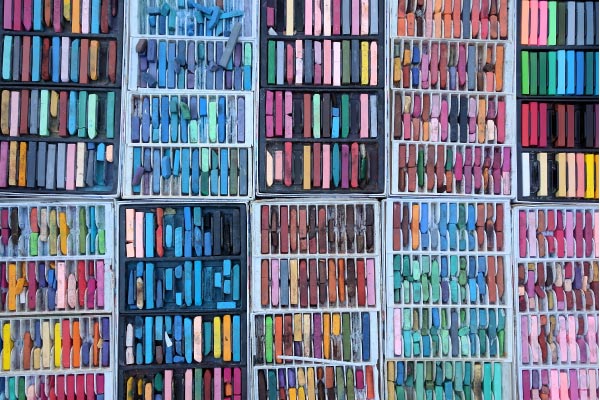
Art therapy literally means treatment with art. This is one of the methods of psychotherapy that allows you to express accumulated feelings, emotions and experiences safely. Moreover, studying own artwork, a person conducts a certain self-analysis of the inner state, which helps to understand yourself.
This method is used by many psychotherapists both for diagnostics and as a separate tool for working with a client. But most importantly, this method is available to everyone, and you can use it yourself. After all, almost any material will suit you for art therapy: it can be a set of paints and a brush, or a stick and a sandy surface. There are no limits, just like there are no requirements for your artistic skills. The main role is not played so much by the result as by the process of creating something.
How does art therapy work?
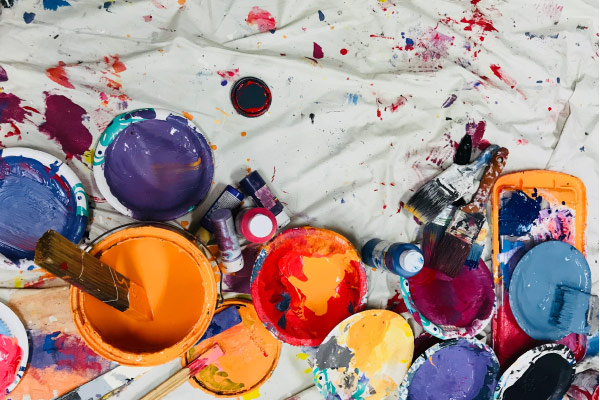
Art therapy is based on the projection mechanism, which allows one to transfer inner experiences, obsessive thoughts and emotions to the art object. Thus, a person through creativity expresses his/her inner state, which is sometimes quite difficult to explain verbally. What's more, creativity itself promotes the release of dopamine into the bloodstream, which improves mood and reduces stress.
This therapeutic property of art was noticed and then used by the doctor and artist, Adrian Hill. He coined the term art therapy in 1942, which he later described in his book “Art Against Disease”. Then this method of psychotherapy began to attract the attention of other specialists, as a result of which many studies were carried out confirming the beneficial effects of art on the mental and physical state of a person.
Types and methods
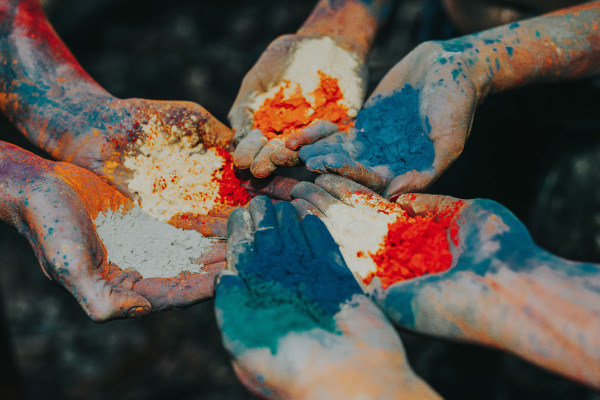
Today, art therapy includes many different types and techniques, thanks to which everyone can find something to their liking. For example, some of the most popular art treatments include:
- art therapy - based on the visual arts;
- phototherapy - both ready-made and new images are used;
- sand therapy - based on the creation of sand compositions;
- clay therapy - involves the creation of volumetric images;
- bibliotherapy - analysis of literary works and composing your own;
- drama therapy - based on dynamic art (staging, dance).
Also, the constant emergence of new trends in art annually expands the list of types of art therapy, replenishing it with fresh modifications.
Considering the methods of art therapy, two main categories can be distinguished:
- Active. They consist in creating something new (drawing, collage, sculpture).
- Passive. Analysis of finished artworks and / or reworking them.
To better understand the difference between passive and active methods, we suggest learning some methods of independent use of art therapy.
Exercise "Image of the goal"
Quite often, it is difficult for a person to be specific on a goal. To better understand your true desires, you need to arm yourself with pencils, colored pens or felt-tip pens and a piece of paper.
Even without a clear idea in your head, just start drawing. If unsuccessful images appear that begin to upset you, cross out or shade them, or take a new sheet of paper. After finishing your drawing, carefully examine it, analyze what is depicted on it and how this can be achieved. This exercise belongs to active methods of art therapy.
Exercise “Clue"
Sometimes we are confused and do not know what to choose, how to find a way out of some situation, or which direction it is better to continue our life's journey in.
In this case, take your favorite book and randomly open any page, just select a paragraph on it at random and read it. Think about how the written relates to your life now and what actions it prompts you to do. This way you can ask yourself a few questions and keep looking for "clues" in the pages of the book.
You will be surprised how this passive art therapy exercise can lift your mood and boost your self-esteem.
Who needs art therapy?
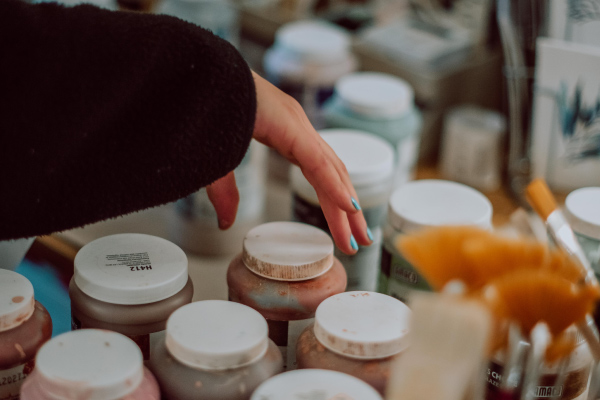
First of all, it is worth noting that art therapy does not know age restrictions, which means it is suitable for both children and adults. Moreover, it does not only help to normalize the mental state, but also just brings pleasure. However, special attention to this psychotherapeutic method should be given to those who:
- stressed for a long time;
- experience burnout;
- feel increased anxiety;
- experience interpersonal conflict;
- experience irritation or unmotivated aggression;
- suffer from depression;
- have phobias, unfounded fears.
Of course, it is better not to bring yourself to such states and use art therapy for preventive purposes. Moreover, it also allows you to unleash creativity, develops thinking, helps to determine life goals and ways to achieve them. Based on this, probably, this method is needed by everyone who wants to be in harmony and maintain a resource state.
Art therapy online: list of stress relief sites
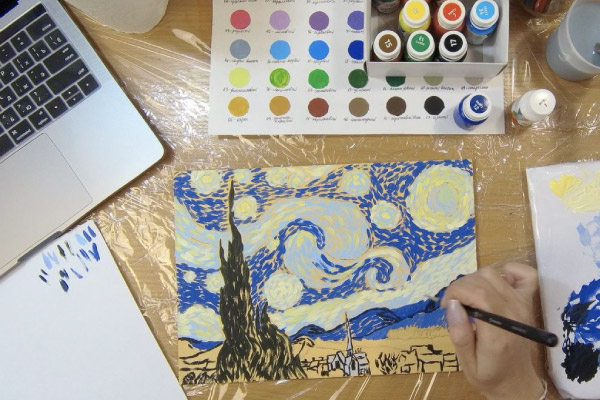
It is impossible not to agree that now it is more likely that a person will have a phone, tablet or laptop at hand than a set of paints or pencils. However, for art therapy, this is not a hindrance. There are many drawing sites online today. We want to share a selection of web resources that are completely free to use. In addition, you can save your drawings or share them with your friends.
Webchemy
A feature of this resource is the creation of symmetrical elements, which, at first, may be slightly unusual. Here you can also experiment with the transparency of the elements, their size and direction.
Рiskelapp
On the site, you will immerse in the world of pixels, where you can animate your drawing and create the own GIF. Moreover, there is an opportunity to create offline for Windows and Mac OS users.
Flame Painter
The view of flame can have a soothing therapeutic effect. Here, you can create unusual pictures with the help of continuously moving twinkle. Experiment with colors and sizes of flames to create mesmerizing images.
My oats
Mandalotherapy has become one of the most popular types of art therapy available on this online resource. You can also follow the work of other users or share your own. A variety of brushes and lines will allow you to create the most unusual patterns.
Silk
Here, you can also create magical mandalas by experimenting with the speed and direction of the mouse. And in addition to the drawing itself, you can also share the process of its creation, which will be shown step by step on social networks.
This is sand
You can paint at home with sand and not leave a grain with this website. It is also available as an app for Android and IOS. Your actions are accompanied by the sound of pouring sand, which helps you immerse in the process of creating a picture.
Neon Flames
The resource allows you to create mesmerizing abstract drawings, where every mouse movement becomes colorful stains, similar to the constellations of distant galaxies. Believe me, even with your eyes closed, you can paint a breathtaking picture here. And a basic set of tools makes the process itself easy and effortless.
Roundraw
Here, you can not only create the own drawings, but also edit existing images. A large assortment of tools allows you to carefully work on every detail and provides many opportunities for realizing your fantasies.
Autodraw
Create a silhouette of the subject, and the editor will offer you options trying to guess what exactly you want to depict. Thus, you can create beautiful drawings easily and quickly, or test artificial intelligence for quick wits.
Sketch Toy
The resource allows you to draw sketches online and share the process of their creation. You can also make your drawing vibrate, which will make it more fun. You won't have a wide range of tools at your disposal, but is it really necessary for creating sketches?

The earliest work of Leonardo da Vinci
A small painted tile caused quite a stir among the scientists of the art world. This is because some scholars believe that the recently discovered work is Leonardo da Vinci's earliest known work
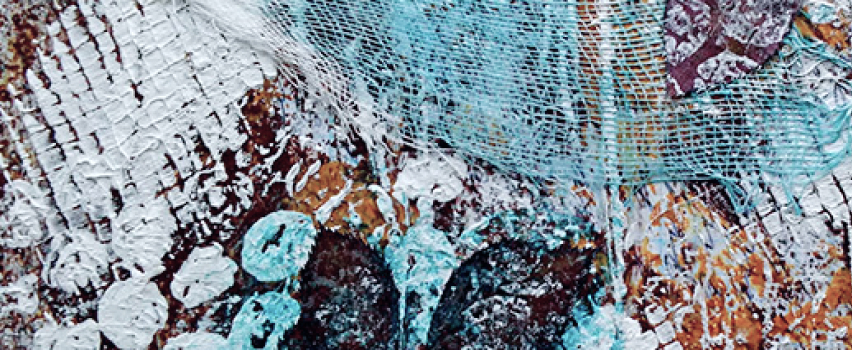
Interesting facts about painting
Paintings hold the secrets of the creator. Sometimes we manage to solve them, but many of them continue to be riddles, or simply stay unnoticed.












Thank you, your review has been sent successfully.
It will be posted on the site after moderation.